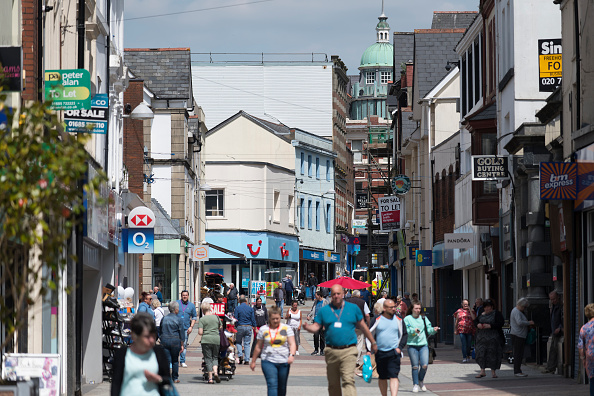Our high streets are in grave danger

For decades, the local high street has been the jewel in the crown of UK towns and cities, boasting an array of thriving local businesses and big-name stores.
However an outdated business rates system, coupled with the rise of online retail giants, has left them in grave danger. This is a watershed moment for our high streets, and we must act now to save them.
A first step in any response must be overhauling business rates which, at best, are past their sell-by date.
The current system – which we must not forget makes up only four per cent of overall taxation – penalises those businesses which rely disproportionately on having large properties, not least retailers and manufacturers.
There have been some valiant attempts to address this. In the autumn budget of 2018, Philip Hammond announced a one third relief for businesses with a rateable value of under £51,000. This was welcome news for many small retail businesses, but we cannot keep using reliefs as sticking plasters to fix a system which is fundamentally broken.
Since I was appointed managing director of John Lewis more than a decade ago, what to do about the business rates conundrum has been at the forefront of my mind. It is clear that the current system is having a detrimental effect on small businesses (SMEs), yet at the same time business rates are a key income generator for the Exchequer. And in areas of ‘business rate retention’, like the West Midlands, they help pay for significant strategic investments.
During my appearance at the Treasury Select Committee last week I suggested several options to help, including giving local authorities the power to reduce business rates for new and expanding businesses; and giving a 100 per cent relief to public sector organisations – such as the NHS – who would bring their services into high street locations.
These reliefs could be funded by greater online taxation and from increased council tax revenue, as more homes are built in town centres. This would give businesses much-needed help, whilst also boosting town centres and allowing local authorities to maintain their revenue streams.
This was offered as one potential idea and I am sure others will have many more, but these can only be incorporated if the new incoming Conservative government undertakes a wholesale review of the business rates system. The longer we wait the more strain will be put on our high streets, and so a review is needed urgently.
However business rates are only one form of taxation for SMEs, who also face corporation tax, employers’ national insurance and VAT. For a small business trying to prosper and grow, administering these different taxes can be overwhelming.
Nick King and the Centre for Policy Studies in their report “Think Small” have suggested real simplification through an all-in-one flat turnover tax for businesses who make less than £1m a year. In principle this is an idea I would very much support, and would urge the Treasury to explore fully.
A final area of taxation that must be looked at again is the tax paid by online businesses. As an example last year Amazon paid only £4.6m in corporation tax, and that is, quite simply, not right.
The chancellor has made a brave start start in addressing this by introducing a digital services tax in last year’s Budget. Nevertheless, this area must be explored much further. As the digital economy grows, our tax system must reflect that change.
Despite this we must not fall into the trap of thinking reform of taxation alone will revive our high streets. That needs a much wider plan to re-define the make-up of town centres, looking beyond retail to encompass more homes, public services, and a range of businesses including startups.
To do this I have suggested designating town centres ‘free trade zones’, something that has unquestionably worked in Asia and the Middle East. These zones, which would be similar to our successful Enterprise Zones, would incorporate suggested changes to business rates whilst also improving local policing and infrastructure, and introducing special planning conditions to allow rapid change of uses – perhaps from retail to residential.
This builds on my 12-point blueprint for the modern town centre, which incorporates everything from taxation to housing and safety to transport.
Here in the West Midlands, we are absolutely committed to reimagining our town centres, which is why I have introduced a Regional Town Centre Task Force.
Chaired by Jon Bramwell, managing director at HSBC UK Commercial Banking, and incorporating prominent figures from the worlds of retail, development, finance, housing, education, community groups and government, the group is designed to think broadly about a problem which goes well beyond retail to the heart of our communities.
Our high streets are in peril. But if coordinated action is taken now, there is still time for them to thrive once more.
